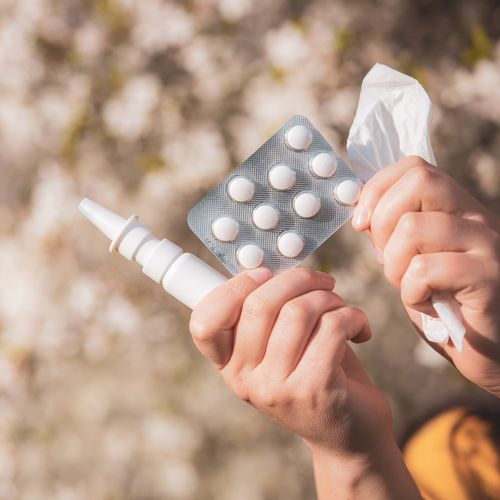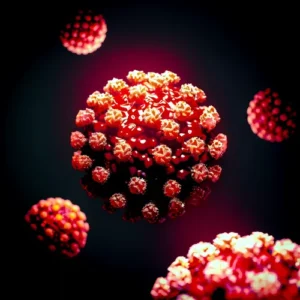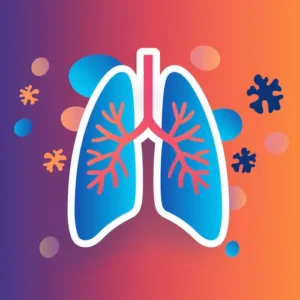Hay fever is a condition that affects 15 – 20% of the population in the United Kingdom. Is the most common of allergic conditions. Those that suffer with hay fever may also get asthma. Hay fever is also known as allergic rhinitis.
Allergic rhinitis is an abnormal and exaggerated body immune reaction to an exposure to an allergen. In this case the allergen can be pollen, house dust mite or animal dander. Formerly, the term hay fever was used to strictly refer to allergy to grass pollen. But now it encompasses many more types of allergens.
Hay fever mostly affects the young and symptoms tend to become less severe as one ages. However, some people can get it in their middle age years. This could be due to immunological disorders and calls for seeing a health professional for a thorough check-up.
For many, Hay Fever symptoms can appear at around the ages of 10-12 years. Peak symptoms are normally in the 20’s and early 30’s. After this time symptoms may start to go. However, for some poor souls, hay fever can start for the first time in their 30’s!
Causes of Hay Fever
As already noted, various allergens trigger hay fever. When this allergen enters the body, the body reacts by sending already (previously) sensitised antibodies called immunoglobulins to contain the invading allergen. People with specific allergies produce inordinately large amounts of these immunoglobulins so that they end-up doing more bad than good to the body. If we can liken this reaction to warfare, it can appropriately be referred to as an act of ‘overkill’. One of the results of this reaction is the overproduction of histamines following the destruction of a large number of mast cells. These are cells that are important in the normal functions of the immune system including wound healing. This over-reaction and excess histamine release is what gives the characteristic symptoms of hay fever discussed below.
Common hay fever triggers include:
- Home triggers like fungal moulds, dried microscopic peeled skin or feathers of pets (dander), and house dust mites.
- Outside triggers include pollen from various plants. Common ones include, grass, tree, and ragweed pollen.
Hay fever triggered by pollen can also be referred to as seasonal since it coincides with the season when the particular plant is flowering.
Other less common triggers of hay fever include cigarette smoke and air pollution. Additionally, some individuals may experience symptoms year-round due to perennial allergens such as dust mites or pet dander. Genetics may also play a role in developing hay fever, with individuals being more likely to develop the condition if they have a family history of allergies. Climate and weather can also affect the severity of hay fever symptoms, with hot and windy days exacerbating symptoms and rainy days potentially providing relief.
Symptoms of Hay Fever
The symptoms occur immediately or soon after exposure to an allergen. They include:
- Upper respiratory symptoms like runny nose and congestion.
- Watery red and itchy eyes.
- Repeated sneezing.
- Sore throat and irritation.
- Loss of sense of smell.
- Light-skinned people may notice a blue coloration under the eyes.
Treatment of Hay Fever
The immediate concern is to help the patient get relief as quickly as possible. This will also help to minimise chances of complications. There are two main approaches to treatment. These are:
- Drug treatment where antihistamines, corticosteroids and nasal rinsing are used. Drugs that help to regulate the immune system may also be given.
- Lifestyle changes include keeping pets out of the house and especially out of the bedroom. It also means avoiding contact with such animals. Keeping the house clean, mould-free, well ventilated and dry minimises chances of house dust mites and other known allergens like cockroaches.
If this palliative approach doesn’t seem to be working and a fever develops, an infection could have set-in and a doctor should look into it immediately.
Prevention of Hay Fever
There is no absolute way of preventing hay fever. However, the first step that could help is identifying the allergen that triggers your symptoms. Then try to avoid that as much as possible. Some areas have pollen reports that give the amount pollen in the air at a particular time. Take heed of such reports and avoid going out when pollen concentration is high.
Long-acting corticosteroids may be given before the pollen season to minimise immune reactions when allergens finally arrive. Corticosteroids can have many side effects and should only be considered in collaboration with your doctor.
A healthy diet and certain herbs can help to stabilise the immune system and prevent over-reaction.
Another way to prevent hay fever is through the use of air purifiers and/or air conditioning units with HEPA filters. These filters trap pollen and other allergens, reducing their concentration in the air. It is also important to keep indoor spaces clean and dust-free, as dust can aggravate hay fever symptoms.
Wearing wrap-around sunglasses when outdoors can prevent pollen from entering your eyes, reducing the risk of itchy, watery eyes.
Lastly, taking allergy medication such as antihistamines and decongestants before exposure to allergens can help alleviate symptoms. However, it is important to consult with a healthcare professional before taking any medication, as some may have side effects and may interact with other medications.
While hay fever cannot be completely cured, following these prevention methods can help reduce the severity of symptoms and improve quality of life during allergy season.
Photo by Simon Kadula on Unsplash
Zoom Health is a leading UK supplier of Home Health Tests and Earplugs
This post was originally published in 2017. It was last updated in June 2023.





